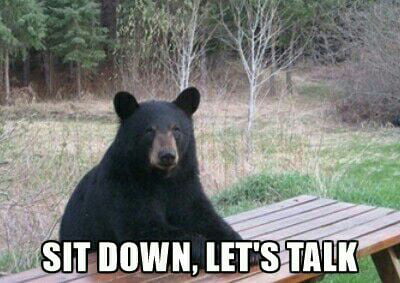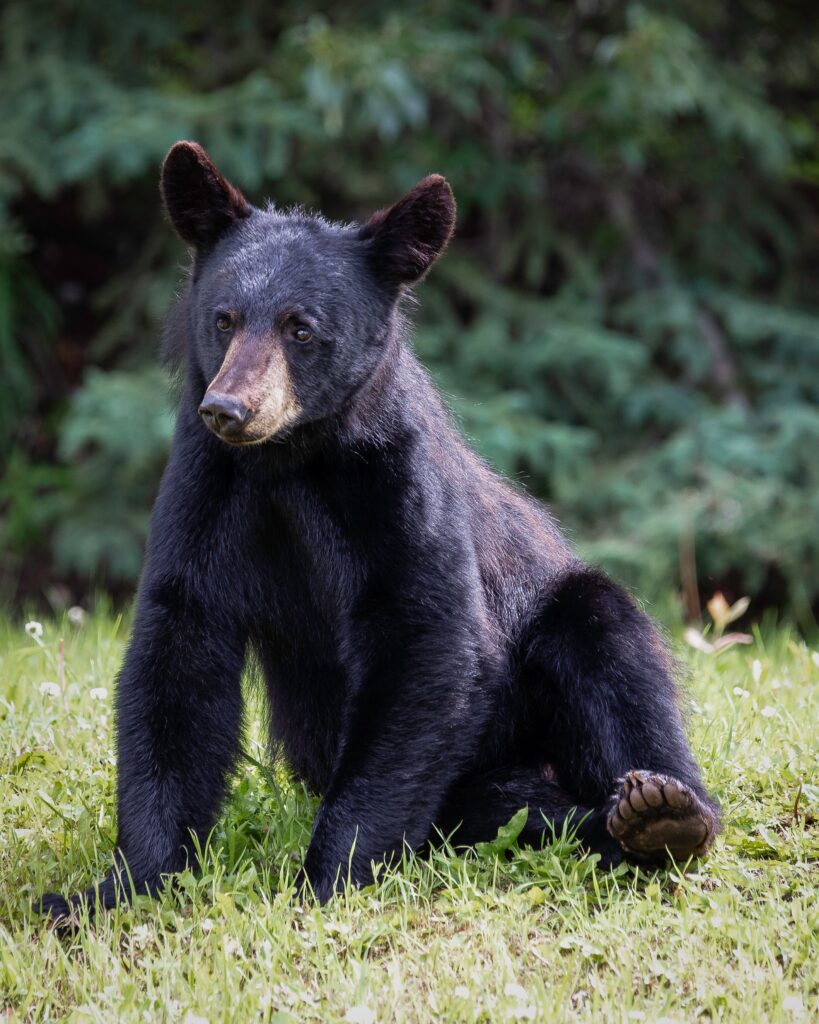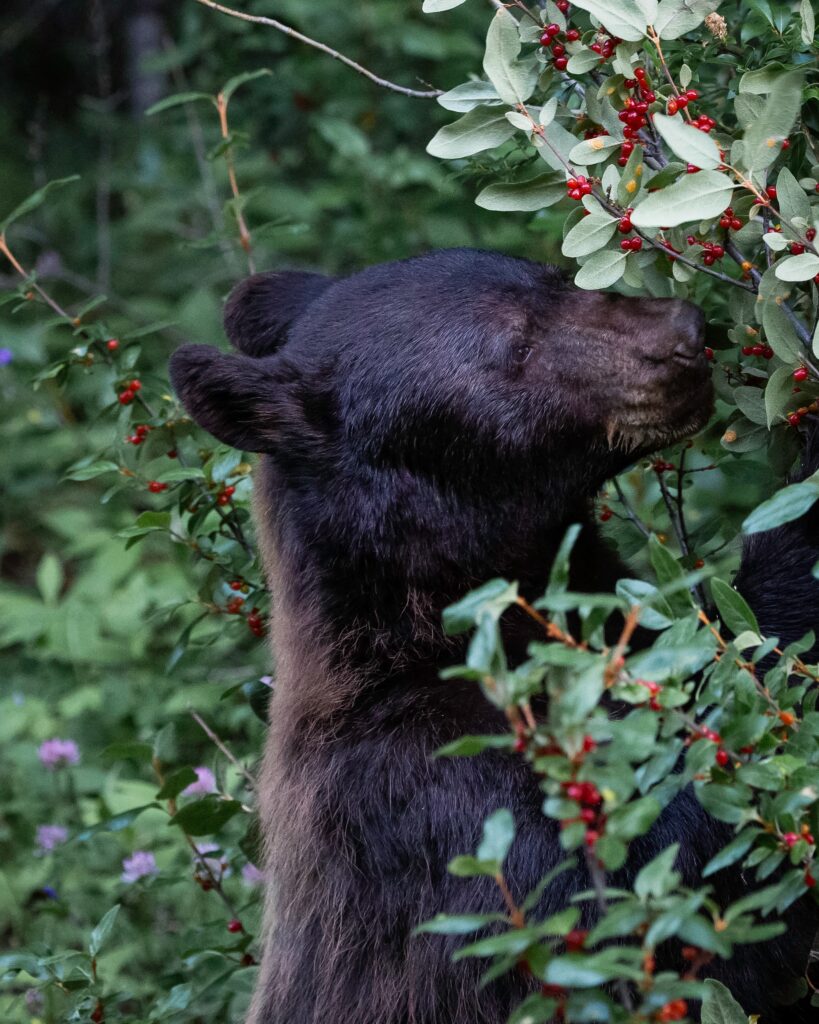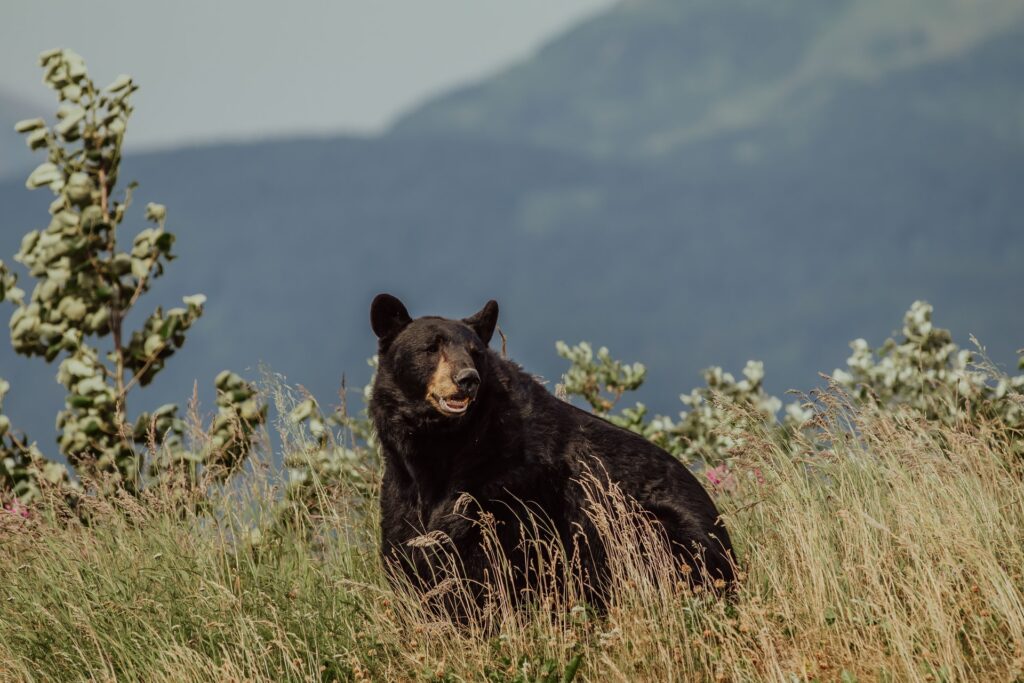
Here in the Carson Valley, we are lucky enough to share this area with the beautiful American Black Bear. While more common in the mountains, we do get sightings in the Valley and sometimes in town. A few weeks ago I was at the Carson River off of Washoe Road and saw a cinnamon colored black bear walking along the shore, headed east.

Despite their name, American black bears show a great deal of color variation. Individual coat colors can range from white, blonde, cinnamon, light brown or dark chocolate brown to jet black, with many intermediate variations existing. White to cream-colored American black bears (known as “Spirit Bears”) occur in the coastal islands and the adjacent mainland of southwestern British Columbia. Silvery-gray American black bears with a blue luster (this is found mostly on the flanks) occur along a portion of coastal Alaska and British Columbia.
According to the NDOW website, black bears live from “northern Mexico to Canada and is found in 32 of the American states. There are approximately 900,000 black bears in North America and their numbers are increasing in many of these areas, including Nevada. While we estimate the number of black bears in Nevada to be upwards of 600 animals. Nevada’s bears are part of the larger Sierra Nevada population, estimated to be around 10,000+ bears.”

According to historical records black bears were once widely distributed throughout Nevada, and likely existed at low densities. They were eradicated from Nevada’s interior by the early 1900s, due to hunting of bears from conflicts with people and decimation of their forested habitat during the mining booms in the 1800s. But thankfully black bear populations have increased dramatically in the western part of the state, and sightings in Nevada’s interior Great Basin have increased in the last two decades. They are an important part of our ecosystem.

Black Bears are omnivorous. They graze on grass and browse on berries and blossoms, dig grubs, catch fish and small mammals and scavenge carrion. Before their winter hibernation, black bears do what is called hyperphagia, attempting to consume more than 20,000 calories a day in attempt to add 20-40% of fat to their body weight so they can sustain themselves through the winter.
Unfortunately, black bears start becoming accustomed to humans and our garbage, bird feeders, fruit trees, livestock and other good smelly stuff that will attract a bear. It’s up to us and visitors to BE RESPONSIBLE in bear country! Bears are very strong and agile animals so don’t think your food is safe just because it’s in your car. Bears also have an extremely sensitive nose and can smell things like bird feed in a closed container inside your shed! They are quick learners and they are very persistent, eventually learning to open doors and windows.
So should us hikers be worried about running into black bears here? Well, the chances of having a dangerous experience with a black bear is extremely slim, but it is always good to recreate wisely. Most bears are going to run away from humans and probably climb a tree, but a bear that does not move off the trail can make people nervous. So a great easy solution is hiking with a can of bear spray. It is easy to use and light-weight which will give you peace of mind, and not only is it effective against bears, it will help with mountain lions, coyotes, and even aggressive dogs. Make sure you know how to use it effectively, and practicing with an inert can helps!
For more information on handling bear encounters, check out this page on the Nevada Department of Wildlife’s website.

I feel lucky to be living amongst these amazing animals, and always love seeing one in my travels.
